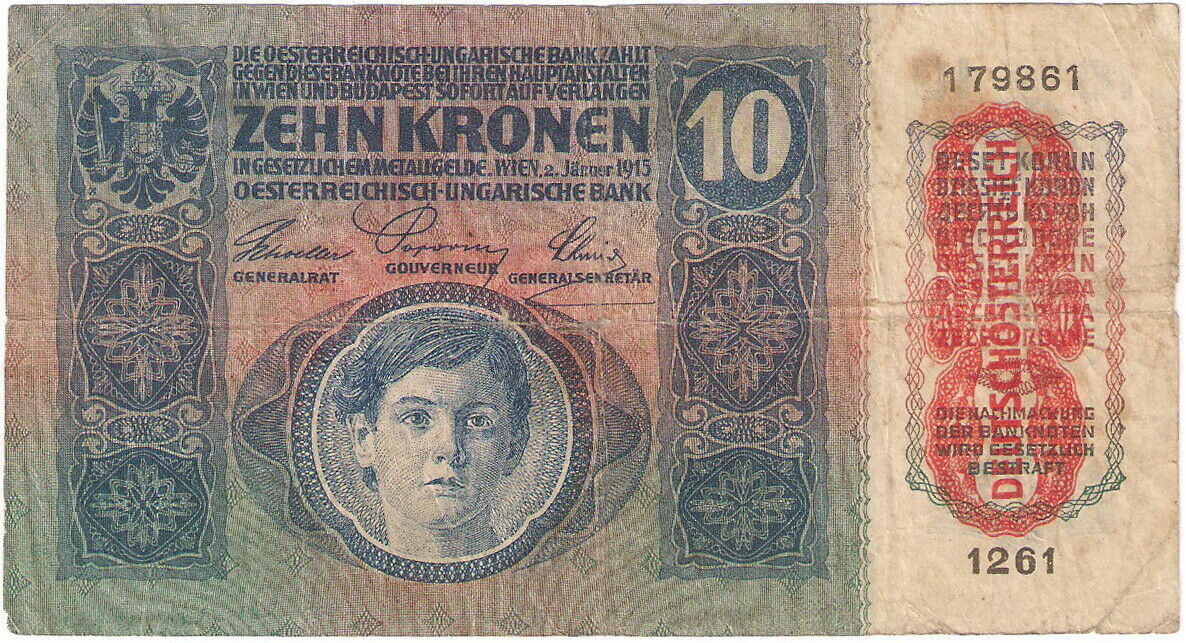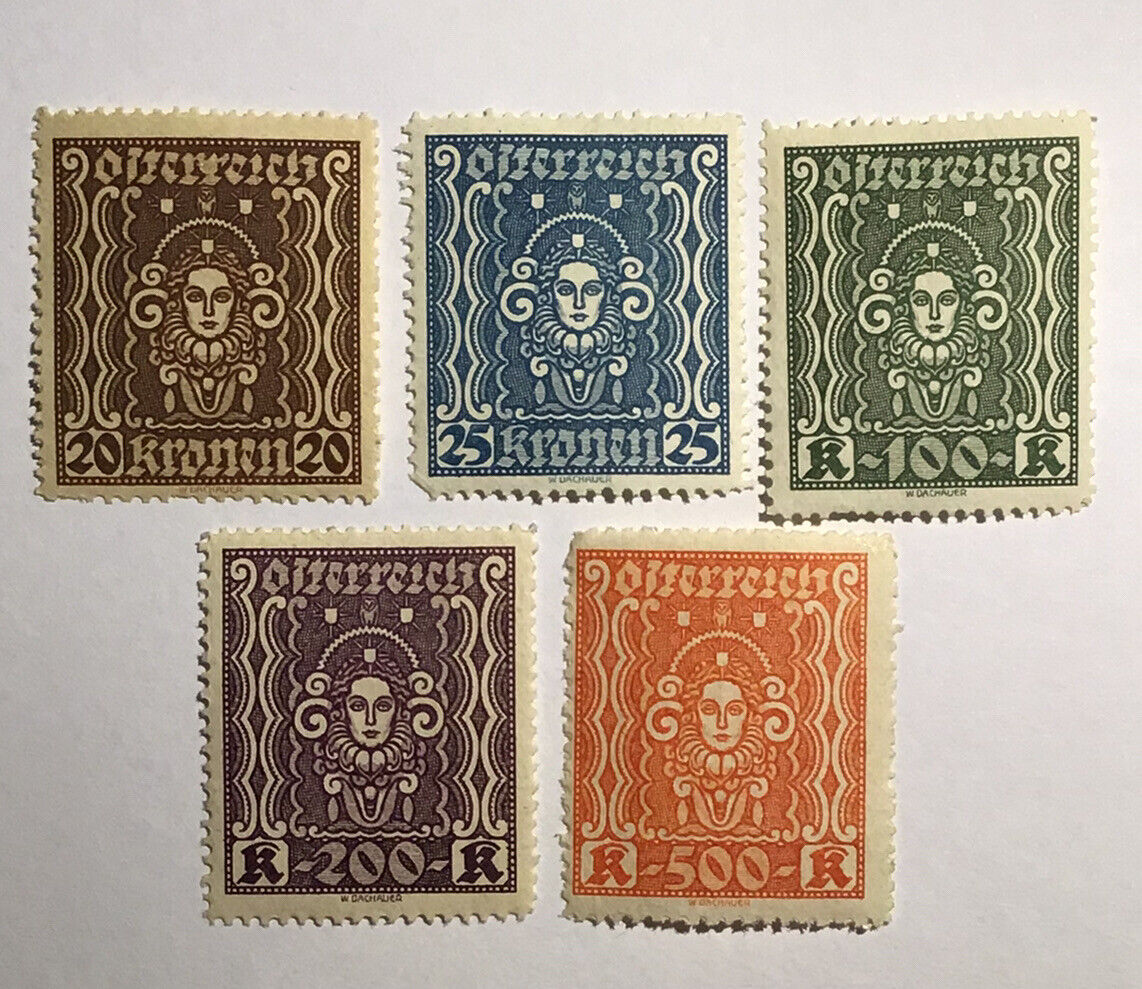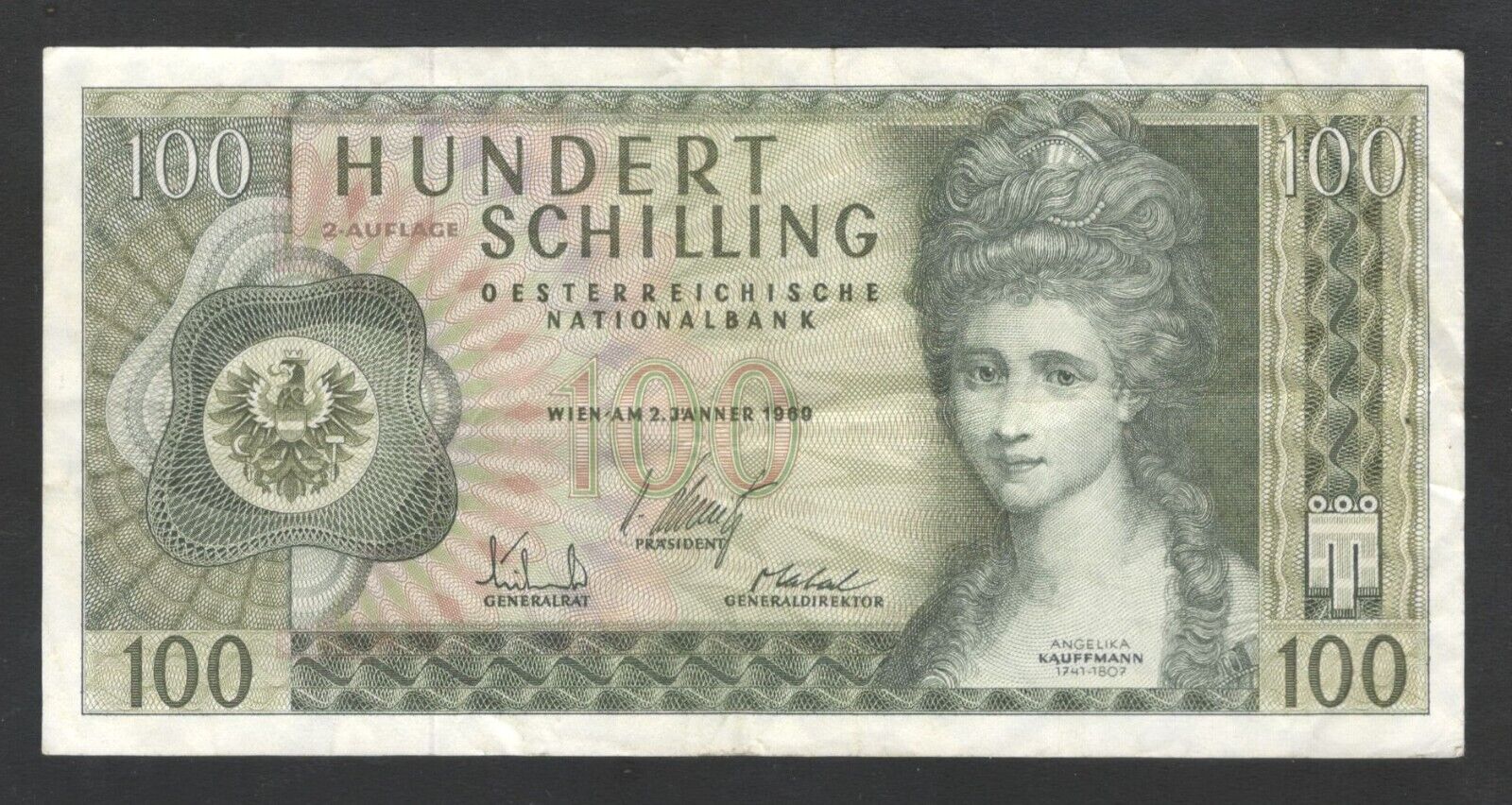-40%
Austria-Hungary banknote - 10 zehn kronen - year 1915 - World War I - boy
$ 4.75
- Description
- Size Guide
Description
The Krone or korona (German: Österreichisch-ungarische Krone, Hungarian: osztrák-magyar korona, Czech: rakousko-uherská koruna, Slovak: rakúsko-uhorská koruna) was the official currency of the Austro-Hungarian Empire from 1892 (when it replaced the gulden, forint, florén or zlatka as part of the adoption of the gold standard) until the dissolution of the empire in 1918. The subunit was one hundredth of the main unit, and it was called Heller in the Austrian and fillér (or halier in Slovak) in the Hungarian part of the Empire.The official name of the currency was Krone (pl. Kronen) in Austria and Osztrák–magyar korona in Hungary. The Latin form Corona (plural Coronæ), abbreviated to Cor. on the smaller coins, was used for the coinage of the mostly German-speaking part of the empire, known as Cisleithania. Currency names in other ethnic languages were also recognised and appeared on the banknotes: koruna (pl. korun) in Czech, korona (pl. korony) in Polish, корона, korona (pl. корон, koron) in Ukrainian, corona (pl. corone) in Italian, krona (pl. kron) in Slovene, kruna (pl. kruna) in Croatian, круна, kruna (singular and plural) in Serbian,koruna (pl. korún) in Slovak, and coroană (pl. coroane) in Romanian. Its counterpart in English is crown.
The symbol of the currency was its abbreviation: K. or sometimes Kr.
After several earlier attempts the Austro-Hungarian Empire adopted the gold standard in 1892 according to the plan of Sándor Wekerle minister of finance. This plan included the introduction of the new currency, the Krone. It consisted of 100 Heller (Austria) or Fillér (Hungary). The value of the Krone was set at 2 Kronen = 1 Gulden (Florin, or forint in Hungarian) of the previous silver-based currency. From 1900 onwards, Krone notes were the only legal banknotes of the Empire.
Austro-Hungarian krone paper money appeared in the beginning of the 20th century - almost ten years after the coins were introduced. All banknotes were bilingual (German and Hungarian), and the value was indicated in eight other languages (Czech, Polish, Croatian, Slovene, Serbian, Italian, Ukrainian and Romanian). After the dissolution of the empire banknotes were overstamped to limit their circulation according to the new borders.











